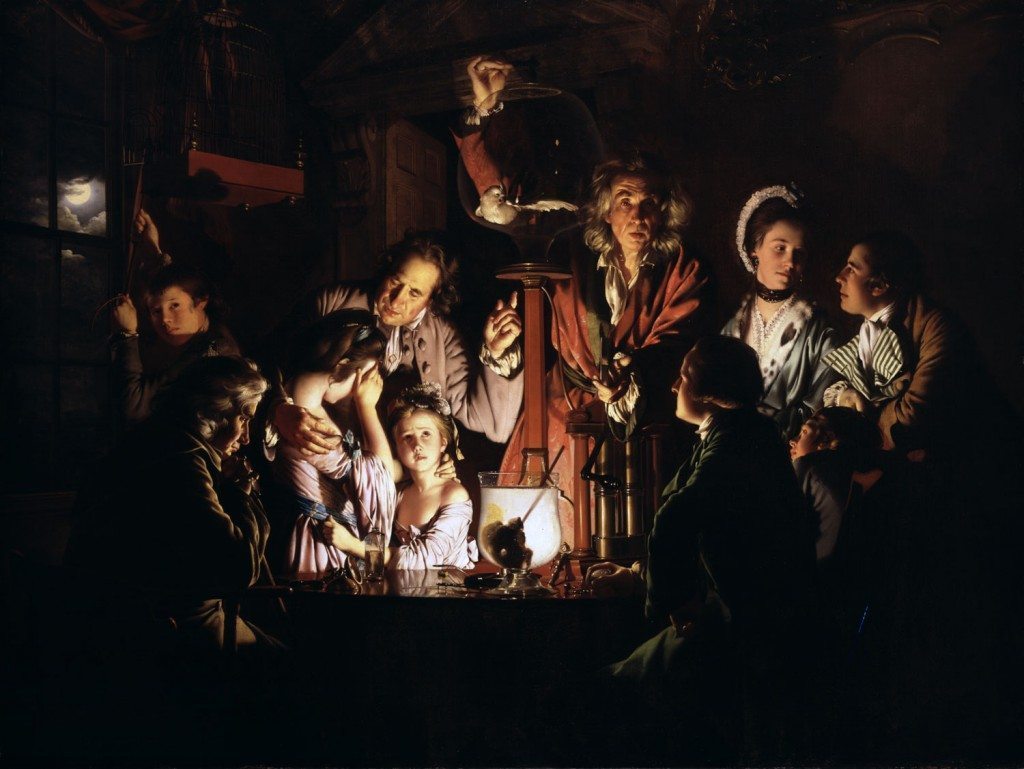An Experiment on a Bird in an Air Pump (Exhibited 1768)
Image: Joseph Wright of Derby (1734-1797). Oil on Canvas.
The air pump was invented by Otto von Guericke (1602-1686) at Magdeburg in 1650. The first English pump was made for Robert Boyle (1627-1691) in 1658-1659. In the 18th century the air pumps became ordinary items for laboratories of scientists, or for museums of curiosities. “A Model of a double Pump” is mentioned in the catalogues of Richard Greene’s museum of curiosities in Lichfield, which no doubt was well known to the artist.
Air pumps were widely used to illustrate scientific lectures. This experiment is described by James Ferguson in a following way: ‘If a fowl, a cat, rat, mouse or bird be put under the receiver, and the air be exhausted, the animal is at first oppressed as with a great weight, then grows convulsed, and at last expires in all the agonies of a most bitter and cruel death.’ But in practice the experiment was probably shown in less upsetting manner: ‘As this experiment is too shocking to every spectator who has the least degree of humanity, we substitute a machine called the lungs-glass in place of the animal; which by a bladder within it, shews how the lungs of animals are contracted into a small compass when the air is taken out of them.’ Wright chose the cruel variant of experiment. The bird will die if the demonstrator continues to deprive it of oxygen, and Wright leaves us in doubt whether or not the cockatoo is going to be suffocated.
Including a white cockatoo in the painting is unusual. These birds were little known in England until the 1770s when they were depicted by British draughtsmen taking part on Captain Cook’s journeys. Although they probably had been brought to England earlier via Dutch merchants, the birds themselves and their images still remained rare. Wright might have seen a specimen at Sir Ashton Lever’s Museum in Alkrington, near Manchester, or in paintings by Jacob Bogdány (c.1660-1724), a Hungarian painter who had came first to Amsterdam, and then settled in London. He became the leading exponent of this genre in England. A number of Bogdany’s paintings for William Cavendish, 1st Duke of Devonshire, survive at Chatsworth House, Derbyshire.
Wright did not depict an actual gathering, although two lovers on the left are Thomas Coltman and Mary Barlow, who were married in 1769. According to a family tradition, the man timing the experiment has been identified with Erasmus Darwin.
In contrast to “The Orrery”, this painting is disturbing. At that time doubts were being expressed whether rational or scientific knowledge could answer all questions, and satisfactorily explain all nature’s mysteries. The intervention of the ‘civilized world’ into nature and the life of distant countries was often destructive for the latter. Wright is deliberately emphasising the dramatic and exotic over the scientific and the factual.
This painting combines the scientific with the horrific. The wide range of individual reactions – terrified and dismayed girls, the amazed youth on the left, the pensive old man, even the young lovers concerned only each other and indifferent to the experiment – are a far cry from the quiet explanation and understanding of the harmonious laws of the universe in the previous painting.
« Previous in this sectionNext in this section »Continue browsing this section
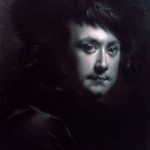 Joseph Wright of Derby: Art, the Enlightenment and Industrial Revolution
Joseph Wright of Derby: Art, the Enlightenment and Industrial Revolution
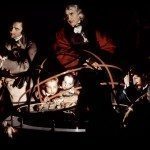 A Philosopher Lecturing on the Orrery (1764-1766)
A Philosopher Lecturing on the Orrery (1764-1766)
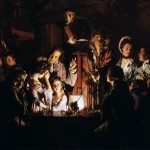 An Experiment on a Bird in an Air Pump (Exhibited 1768)
An Experiment on a Bird in an Air Pump (Exhibited 1768)
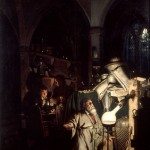 The Alchymist in Search of the Philosopher’s Stone (Exhibited 1771)
The Alchymist in Search of the Philosopher’s Stone (Exhibited 1771)
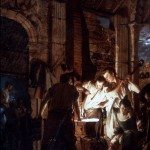 The Blacksmith’s Shop (1771)
The Blacksmith’s Shop (1771)
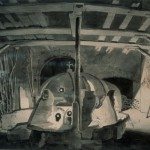 Interior of a Glass House no. 1 (c. 1770-1772)
Interior of a Glass House no. 1 (c. 1770-1772)



